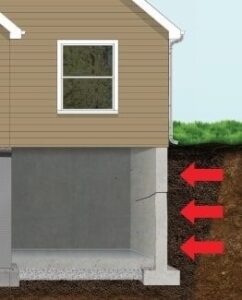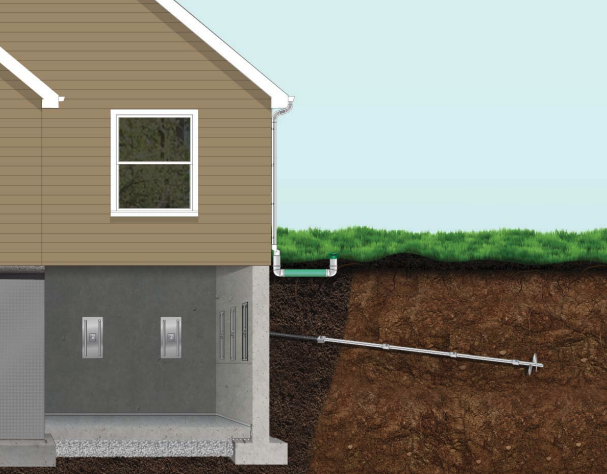
Foundation settling is typically expected in any home, and you may even see small cracks because of it. But sometimes you might see a large horizontal crack across the wall with the wall looking like it is angled inward. This is called a bowed wall. So what are the causes and what are the solutions for bowed wall repair?
When too much exterior water presses against your foundation wall, it can cause the wall to crack and bow. Bowed walls are a common problem for homeowners, especially areas that see a lot of rain and melting snow, but that does not mean that it shouldn’t be taken seriously.
Bowed walls have a possibility of collapsing, so you should always seek repair as soon as possible. Jerry’s Waterproofing has multiple bowed wall repair solutions that can get your house back to top shape.
Causes of Bowing Walls
So what causes bowing basement walls? The condition of the soil around your foundation can have a huge impact on the foundation. Some soil-related factors include:
- Hydrostatic Pressure: Snowmelt and heavy rainfall cause the soil to swell. This creates pressure against the foundation walls, causing them to bow or crack. As the soil dries, it pulls away from the walls, creating more damaging effects to your foundation.
- Poor Drainage: Clogged gutters and missing downspout extensions cause water to surround the foundation. This creates pressure against the foundation walls, causing bowing walls.
- Inadequate Grading: Without proper grading, water can flow down into your foundation walls.
- Poor Construction: Poorly built basement walls can compromise the home’s structure. Some issues such as wrong sized sill plates or poorly compacted soil can lead to cracking and bowing over time.
- Maturing Tree Roots: As trees grow larger, so do their roots. Tree roots push against the foundation walls, causing them to bow.
Bowed Wall Solutions
Our repair solutions are designed to permanently repair your bowing walls. One of our professionals can help you determine which one is the right one for your situation:

- Helical Tiebacks are similar to helical piers in that they are screwed into the soil around your home. But helical tiebacks are screwed in next to the bowing wall instead of under the foundation. Anchors are attached to the interior of the wall, and the wall straightens and stabilizes back to its original state. No grout or cement is needed, so it is a quick and effective solution.
- Plate Anchors use two plates, one outside the bowed wall installed in the soil and one on the interior of the wall. These plates are connected by a rod and tightened straighten the wall back to its original level. Plate anchors strengthen the wall so it won’t bow or lean in the future.
- Carbon Fiber wall supports connect the foundation to the frame of the structure. A strip of carbon fiber is attached to the top of the wall with a sill plate, and then the bottom of the strip is anchored to the wall. This solution can be applied to block or poured concrete. It not only repairs and prevents bowing walls, but it also repairs foundation cracks. This is an easy and inexpensive support solution that is nearly invisible when painted over, making it the least intrusive bowing wall option. While it prevents further bowing and cracking, however, it is not as effective at straightening the wall itself.
Each solution has its benefits, and all of them are installed with the best quality products from Earth Contact Products (ECP). The professionals at Jerry’s Waterproofing can evaluate your home and work with you to find a permanent solution to repair your bowing wall.
Need a Bowing Wall Repair Contractor Near You? Contact Us Today
If your basement walls are cracking and bowing and you live within our eastern Nebraska and Western Iowa service area, including Omaha, Lincoln and Council Bluffs, Jerry’s Waterproofing’s team of experts can stop the cracking and bowing that is weakening your basement wall. Contact us today to learn more about bowed wall repair and get a free quote.



